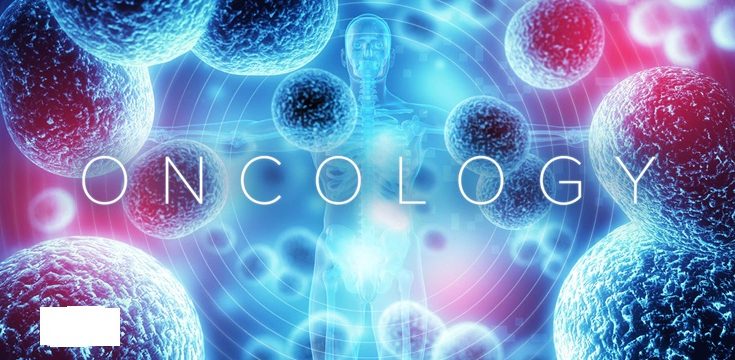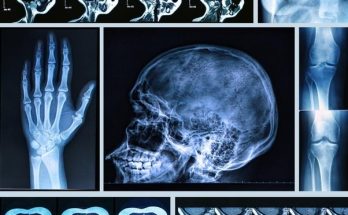Particle Therapy: Proton and Carbon Ion Therapy
Particle therapy is a type of radiation therapy that uses beams of protons or carbon ions, rather than photons (X-rays or gamma rays), to treat cancer. These particles have unique physical properties that offer potential advantages over traditional photon therapy.
I. Basic Principles:
- Bragg Peak: The key characteristic of protons and carbon ions is the Bragg peak. This is a point at which the particles deposit the majority of their energy. Before the Bragg peak, the particles deposit very little energy. This allows for a highly targeted dose of radiation to be delivered to the tumor while minimizing the dose to surrounding healthy tissues.
- Reduced Scatter: Compared to photons, protons and carbon ions scatter less as they penetrate tissue. This results in a narrower beam and less dose spread to healthy tissues.
II. Proton Therapy:
- How it Works: Protons are positively charged subatomic particles. They are accelerated to high speeds and formed into a beam that is directed at the tumor.
- Advantages:
- Reduced Dose to Healthy Tissues: The Bragg peak allows for a highly conformal dose distribution, minimizing radiation exposure to organs at risk.
- Reduced Side Effects: Lower dose to healthy tissues can translate to fewer and less severe side effects.
- Improved Tumor Control: In some cases, the ability to deliver a higher dose to the tumor while sparing healthy tissues can improve tumor control rates.
- Limitations:
- Cost: Proton therapy is more expensive than traditional photon therapy due to the complex technology required.
- Availability: Proton therapy centers are less common than photon therapy facilities.
- Range Uncertainty: Proton beams have a finite range, and variations in tissue density can affect the precise location of the Bragg peak. This requires careful treatment planning and image guidance.
- Clinical Applications: Proton therapy is used to treat a variety of cancers, including:
- Prostate cancer
- Pediatric cancers
- Brain tumors
- Head and neck cancers
- Lung cancer (in select cases)
- Sarcomas
III. Carbon Ion Therapy:
- How it Works: Carbon ions are heavier than protons and have slightly different physical properties. They also exhibit a Bragg peak, but the spread of the peak is narrower.
- Advantages:
- High Linear Energy Transfer (LET): Carbon ions have a higher LET than protons or photons. This means they deposit more energy per unit length of travel, making them more effective at killing cancer cells, particularly those that are resistant to traditional radiation.
- Reduced Oxygen Effect: Carbon ions are less affected by the oxygen levels in the tumor, which can be a factor in the effectiveness of radiation therapy. This is particularly relevant for hypoxic tumors (tumors with low oxygen levels).
- Limitations:
- Cost: Carbon ion therapy is even more expensive than proton therapy.
- Availability: Carbon ion therapy centers are even less common than proton therapy facilities.
- Increased Biological Effectiveness: The higher LET of carbon ions means that they can cause more biological damage, which can be both an advantage and a disadvantage. Careful treatment planning is essential to minimize damage to healthy tissues.
- Clinical Applications: Carbon ion therapy is used to treat specific types of cancer, including:
- Some head and neck cancers
- Bone and soft tissue sarcomas
- Locally advanced pancreatic cancer
- Chordomas and chondrosarcomas (tumors of the skull base and spine)
- Recurrent tumors
IV. Comparison of Proton and Carbon Ion Therapy:
| Feature | Proton Therapy | Carbon Ion Therapy |
| Particle | Proton | Carbon Ion |
| LET | Lower | Higher |
| Biological Effectiveness | Lower | Higher |
| Range Uncertainty | More sensitive | Less sensitive |
| Cost | High | Very high |
| Availability | More common | Less common |
| Clinical Applications | Wider range | More specialized |
V. Advantages of Particle Therapy over Photon Therapy:
- Reduced Dose to Healthy Tissues: The Bragg peak allows for a more targeted dose distribution, minimizing radiation exposure to surrounding organs.
- Reduced Side Effects: Lower dose to healthy tissues can translate to fewer and less severe side effects.
- Improved Tumor Targeting: The reduced scatter of particle beams allows for more precise targeting of the tumor.
- Potential for Dose Escalation: In some cases, particle therapy allows for a higher dose to be delivered to the tumor, potentially improving tumor control.
VI. Limitations of Particle Therapy:
- Cost: Particle therapy is significantly more expensive than traditional photon therapy.
- Availability: Particle therapy centers are less common than photon therapy facilities.
- Range Uncertainty: Variations in tissue density can affect the range of particle beams, requiring careful treatment planning and image guidance.
- Not Suitable for All Cancers: Particle therapy is not appropriate for all types of cancer.
VII. Future Directions:
- Technological Advancements: Ongoing research is focused on improving the technology for particle therapy, making it more precise, affordable, and accessible.
- Clinical Trials: More clinical trials are needed to further evaluate the benefits of particle therapy for different types of cancer.
- Integration with Imaging and Treatment Planning: Advances in imaging and treatment planning are crucial for optimizing particle therapy delivery.
Particle therapy, particularly proton and carbon ion therapy, represents a significant advancement in radiation oncology, offering the potential for improved tumor control and reduced side effects compared to traditional photon therapy. However, its higher cost and limited availability are important considerations. As technology advances and more clinical data become available, the role of particle therapy in cancer treatment will continue to evolve.



